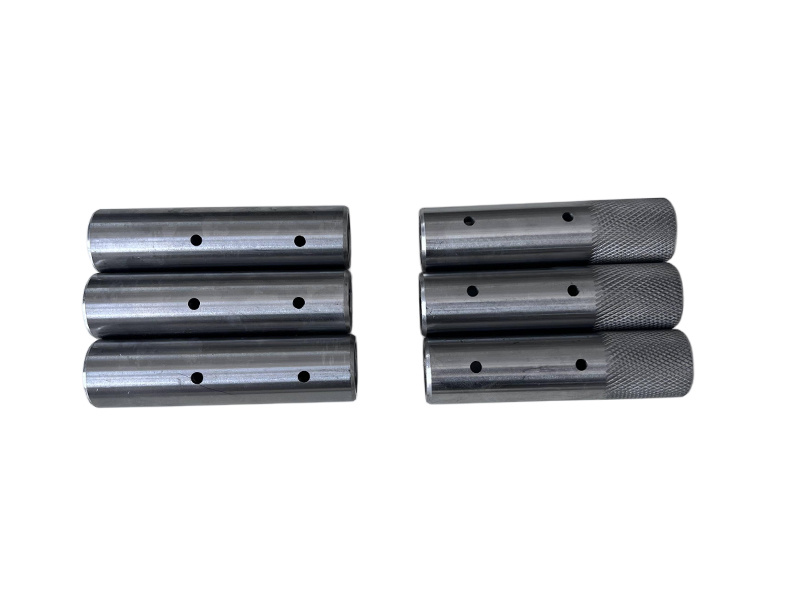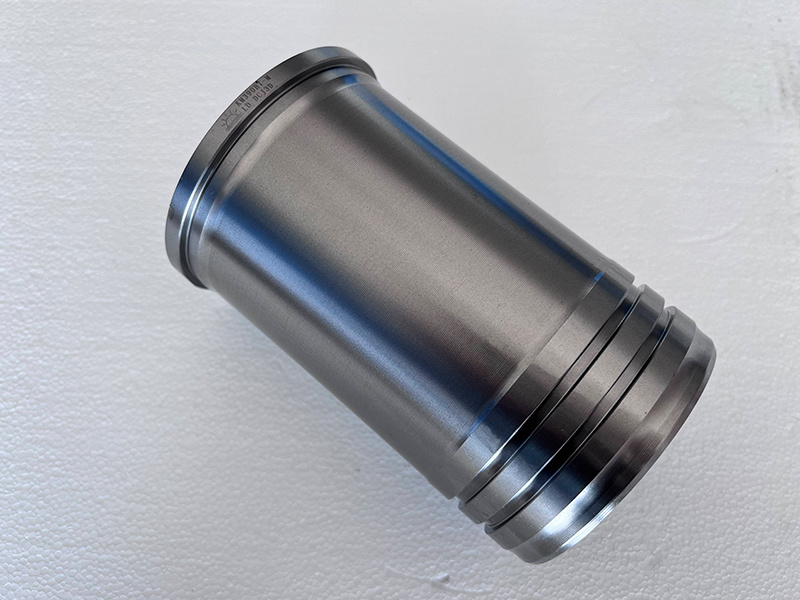Understanding the Role of Speed Regulating Shafts in Agricultural Machinery
Oct 04,2025
Understanding the Role of Speed Regulating Shafts in Agricultural Machinery
Table of Contents
Introduction to Speed Regulating Shafts
What Are Speed Regulating Shafts?
The Importance of Speed Regulating Shafts in Agricultural Machinery
Types of Speed Regulating Shafts Used in Agriculture
How Speed Regulating Shafts Work
Advantages of Utilizing Speed Regulating Shafts
A

Understanding the Role of Speed Regulating Shafts in Agricultural Machinery
Table of Contents
- Introduction to Speed Regulating Shafts
- What Are Speed Regulating Shafts?
- The Importance of Speed Regulating Shafts in Agricultural Machinery
- Types of Speed Regulating Shafts Used in Agriculture
- How Speed Regulating Shafts Work
- Advantages of Utilizing Speed Regulating Shafts
- Applications of Speed Regulating Shafts in Agricultural Equipment
- Maintenance Practices for Speed Regulating Shafts
- The Future of Speed Regulating Shafts in Agriculture
- Frequently Asked Questions
- Conclusion
Introduction to Speed Regulating Shafts
In the realm of modern agriculture, efficiency and precision are paramount. The integration of advanced machinery has revolutionized farming practices, making them more productive and sustainable. Among the critical components that facilitate this transformation are **speed regulating shafts**. These shafts are responsible for controlling the rotational speed of various agricultural implements, ensuring that tasks are completed efficiently. In this article, we will explore the significance, functioning, and future of speed regulating shafts in agricultural machinery.
What Are Speed Regulating Shafts?
Speed regulating shafts are mechanical components designed to maintain or adjust the speed of an engine or machine output. In agricultural applications, they serve to optimize the performance of machinery such as tractors, harvesters, and tillers. By regulating speed, these shafts enable better control over the power supplied to various agricultural tools, enhancing overall productivity and performance.
The Importance of Speed Regulating Shafts in Agricultural Machinery
Understanding the role of speed regulating shafts is crucial for anyone involved in agriculture or agricultural machinery. These components offer several advantages that lead to improved efficiency and yield:
1. Precision Control
Speed regulating shafts provide precise control over the rotation and speed of equipment. This control allows operators to adjust settings according to specific tasks, ensuring optimal performance for activities such as planting, plowing, and harvesting.
2. Reduced Wear and Tear
By maintaining optimal speeds, speed regulating shafts help reduce wear and tear on machinery. This longevity leads to lower maintenance costs and extends the life of the equipment.
3. Enhanced Fuel Efficiency
Efficient speed regulation can improve fuel consumption. By matching the engine speed to the task at hand, operators can reduce unnecessary fuel usage, ultimately lowering operational costs.
4. Improved Crop Quality
Proper speed regulation ensures that equipment operates effectively, resulting in better crop quality. For example, a harvester that operates at the right speed can reduce crop damage and increase yield.
Types of Speed Regulating Shafts Used in Agriculture
Speed regulating shafts come in various types, each designed for specific applications. The most common types include:
1. Constant Speed Shafts
These shafts maintain a consistent speed regardless of load changes. They are commonly used in equipment where steady performance is essential.
2. Variable Speed Shafts
Variable speed shafts allow operators to adjust speeds based on the task requirements. They provide flexibility and adaptability in various agricultural applications.
3. Electronic Speed Regulators
With advancements in technology, electronic speed regulators are becoming more prevalent in agricultural machinery. These systems use sensors and controllers to optimize speed automatically.
How Speed Regulating Shafts Work
The functionality of speed regulating shafts can be understood through a basic overview of their operation:
1. **Input Power**: The engine generates rotational power, which is transmitted to the speed regulating shaft.
2. **Speed Adjustment**: Depending on the type of shaft, speed adjustments can be made manually or automatically to suit specific tasks.
3. **Output Control**: The regulated speed is then delivered to the agricultural implement, allowing for precise operation.
This process ensures that the machinery operates efficiently, adapting to the changing demands of agricultural tasks.
Advantages of Utilizing Speed Regulating Shafts
Integrating speed regulating shafts into agricultural machinery provides numerous advantages:
1. Increased Productivity
By allowing for precise control over speeds, these shafts enable operators to complete tasks more efficiently, increasing overall productivity.
2. Cost Efficiency
Lower fuel consumption and reduced maintenance requirements lead to significant cost savings for farmers and agricultural businesses.
3. Versatility
Speed regulating shafts can be used across various types of machinery, making them versatile components in the agricultural sector.
4. Enhanced Safety
With better control over machinery speeds, operators can work more safely, reducing the risk of accidents during operation.
Applications of Speed Regulating Shafts in Agricultural Equipment
Speed regulating shafts find applications in a wide array of agricultural machinery:
1. Tractors
Tractors utilize speed regulating shafts to control the speed of attachments such as plows and seeders, ensuring optimal performance.
2. Harvesters
In harvesters, these shafts regulate cutting speeds, maintaining efficiency and reducing crop losses during harvesting.
3. Tillers and Cultivators
Speed regulating shafts in tillers help in adjusting soil tillage depth and speed, enhancing soil preparation for planting.
4. Irrigation Systems
In irrigation systems, these shafts can regulate pump speeds, ensuring adequate water supply while conserving energy.
Maintenance Practices for Speed Regulating Shafts
To ensure the longevity and efficiency of speed regulating shafts, regular maintenance is essential:
1. Routine Inspections
Conduct routine inspections to check for wear and tear or any abnormalities in shaft performance.
2. Lubrication
Proper lubrication is crucial for reducing friction and preventing wear. Regularly lubricate the moving parts as per manufacturer guidelines.
3. Monitor Performance
Keep track of the performance of agricultural machinery to identify any changes that may indicate a problem with the speed regulating shafts.
The Future of Speed Regulating Shafts in Agriculture
As technology continues to evolve, the future of speed regulating shafts in agriculture looks promising. Innovations such as IoT (Internet of Things) and AI (Artificial Intelligence) are expected to enhance the functionality and efficiency of these components. Smart sensors and automated systems will likely play a role in optimizing speed regulation, leading to even greater advances in agricultural productivity.
Frequently Asked Questions
1. What is the primary function of a speed regulating shaft in agricultural machinery?
The primary function of a speed regulating shaft is to control the rotational speed of agricultural implements, ensuring efficient operation for various tasks.
2. How do speed regulating shafts improve fuel efficiency?
By maintaining optimal speeds for specific tasks, speed regulating shafts minimize unnecessary fuel consumption, leading to improved fuel efficiency.
3. Are there different types of speed regulating shafts?
Yes, speed regulating shafts can be classified into constant speed shafts, variable speed shafts, and electronic speed regulators, each serving different purposes.
4. What maintenance practices are necessary for speed regulating shafts?
Routine inspections, proper lubrication, and monitoring performance are essential maintenance practices to ensure the longevity of speed regulating shafts.
5. How is technology impacting speed regulating shafts in agriculture?
Technological advancements such as IoT and AI are expected to enhance the efficiency and functionality of speed regulating shafts by enabling smarter and more automated control systems.
Conclusion
Understanding the role of speed regulating shafts in agricultural machinery is vital for maximizing efficiency and productivity in farming operations. By controlling the rotational speed of various implements, these components contribute significantly to cost savings, improved crop quality, and enhanced safety. As technology continues to advance, we anticipate even more innovations that will bolster the effectiveness of speed regulating shafts, paving the way for a more productive and sustainable agricultural future. Embracing these advancements will not only benefit individual farmers but also lead to a more robust agricultural sector as a whole.
TAG:
Recent News
Mastering Agricultural Machinery: A Deep Dive into Engine Speed Control Shaft Mechanics
Mastering Agricultural Machinery: Understanding Engine Speed Control Shaft
Table of Contents
1. Introduction to Engine Speed Control Shaft in Agricultural Machinery
2. Importance of Engine Speed Control Shaft in Agricultural Machinery
3. How Engine Speed Control Shaft Works
4. Types of Engine Speed Control Shafts
4.1. Mechanical Control Shafts
4.2. Electronic Control Shafts
5. Common Issues with E


